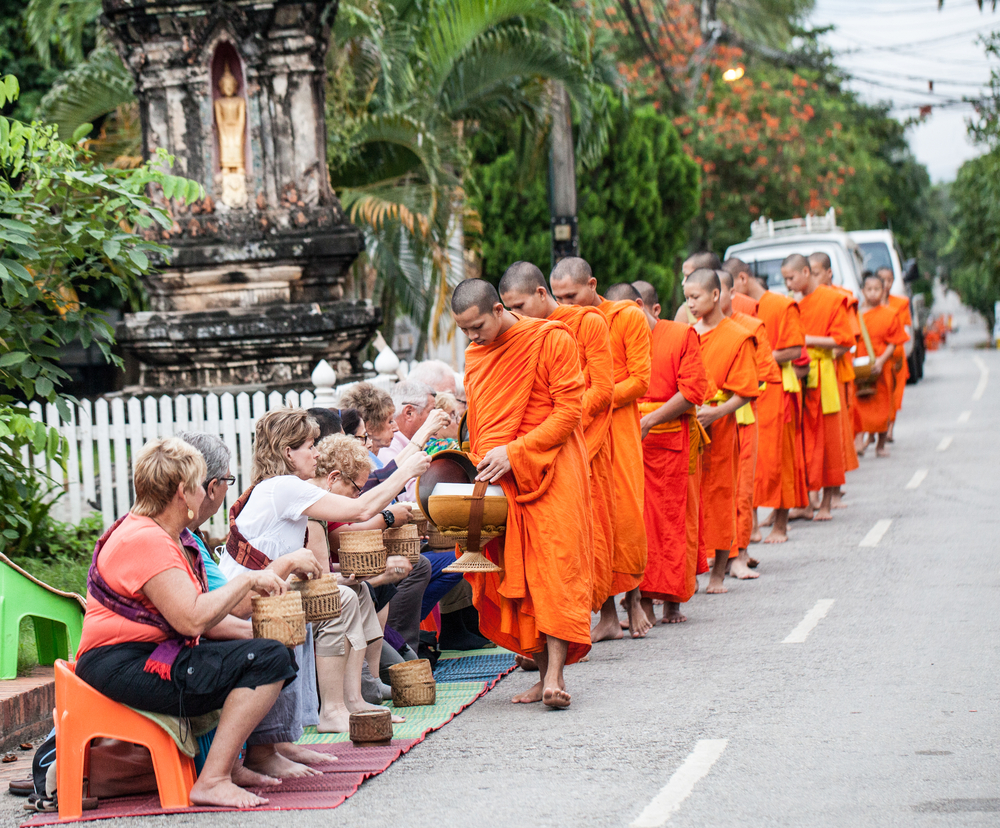Laos’ spiritual heart, Luang Prabang, has seen a surge in tourism. Now, a series of immersive monk-guided experiences are educating visitors about the city’s Buddhist heritage

The city of Luang Prabang is Laos’ spiritual heartland, renowned for its rich Buddhist heritage, ornate temples and a significant population of saffron-robed monks. In fact, the 50,000-person spiritual hub is said by many to have the highest population of monks per capita anywhere in the world.
This was once one of Southeast Asia’s more off-the-beaten-track destinations, but the opening of the high-speed Laos-China Railway in 2021 has seen a sharp surge in visitors to the Unesco World Heritage-listed city. In recent years, locals say this tourism boom has heavily affected the city’s ancient traditions and caused greater commercialisation of sacrosanct Buddhist rituals such as the morning alms-giving.
“Tourism has its pros, but also plenty of cons,” says Anat Khamphew, a former monk at Wat Xieng Mouane monastery. “We see people behaving very disrespectfully towards the monks. Historic Buddha statues have been stolen from monasteries, and important symbols of devotion are used as backdrops for an Instagram selfie.”
In response, Kamphew set up a YouTube channel to show travellers coming to Luang Prabang how to have a more positive impact, encouraging them away from over-touristed hotspots and underlining the importance of the city’s Buddhist roots. “I wanted to help play a part in recovering Luang Prabang’s spiritual heart and soul,” he says.
Khamphew isn’t alone. A handful of other former monks in the city have also set up tour-guiding companies, like Orange Robe Tours and Spirit of Laos, to help promote a better understanding of Luang Prabang’s traditional Buddhist culture and customs. One of Khamphew’s former monastery classmates also established the artisan store LaLaLaos to help girls from poor rural areas get a secondary education, and another ex-monk created Kaiphaen, a highly regarded vocational restaurant that trains marginalised youths from local villages.
“These businesses not only give you a more authentic and ethical experience, but the chance to give back,” Khamphew says. “It’s how travel should be: thoughtful and beneficial to all. And that’s good karma.”
World capital of monks
Located at the confluence of the Mekong and Khan rivers at the foot of jungle-swathed Mount Phou Si (“Sacred Mountain”), Luang Prabang is the former royal capital of Laos. Established in the 14th Century, it soon became a centre of Buddhist learning and monastic life, a role that continues to this day. Some 33 opulently decorated wats (Buddhist monasteries or temples) are scattered across the city, many dating to between the 16th and 19th Centuries, and the city is home to an estimated 1,000 monks.
Centre of spirituality
Luang Prabang takes its name from the golden Phra Bang, the country’s most sacred Buddha icon, which is housed in the city’s National Museum complex in a dedicated temple. “It represents Buddhism coming to Laos and is believed to protect the nation; it’s why the city is so venerated,” says Khamphew. Visiting wats, performing pujas (devotional acts), offering alms and cultivating merits with good deeds form a key part of daily life among Luang Prabang’s largely Buddhist population.
The tourism paradox
Luang Prabang’s profound and omnipresent spirituality, coupled with its eclectic architectural styles – a blend of Laotian, Buddhist and French colonial – have made it increasingly popular with visitors, including Instagrammers and influencers.
“The problem is that what was once a spiritual place has now been transformed by the digital world,” says Khamphew. “Many people are led by ‘Top-10’ or ‘Most-Instagrammable’ lists; they go to the same places, experiencing the exact same things – all through their phones. They end up missing the essence of Luang Prabang and ultimately spoiling what they came to enjoy.”
Source: BBC